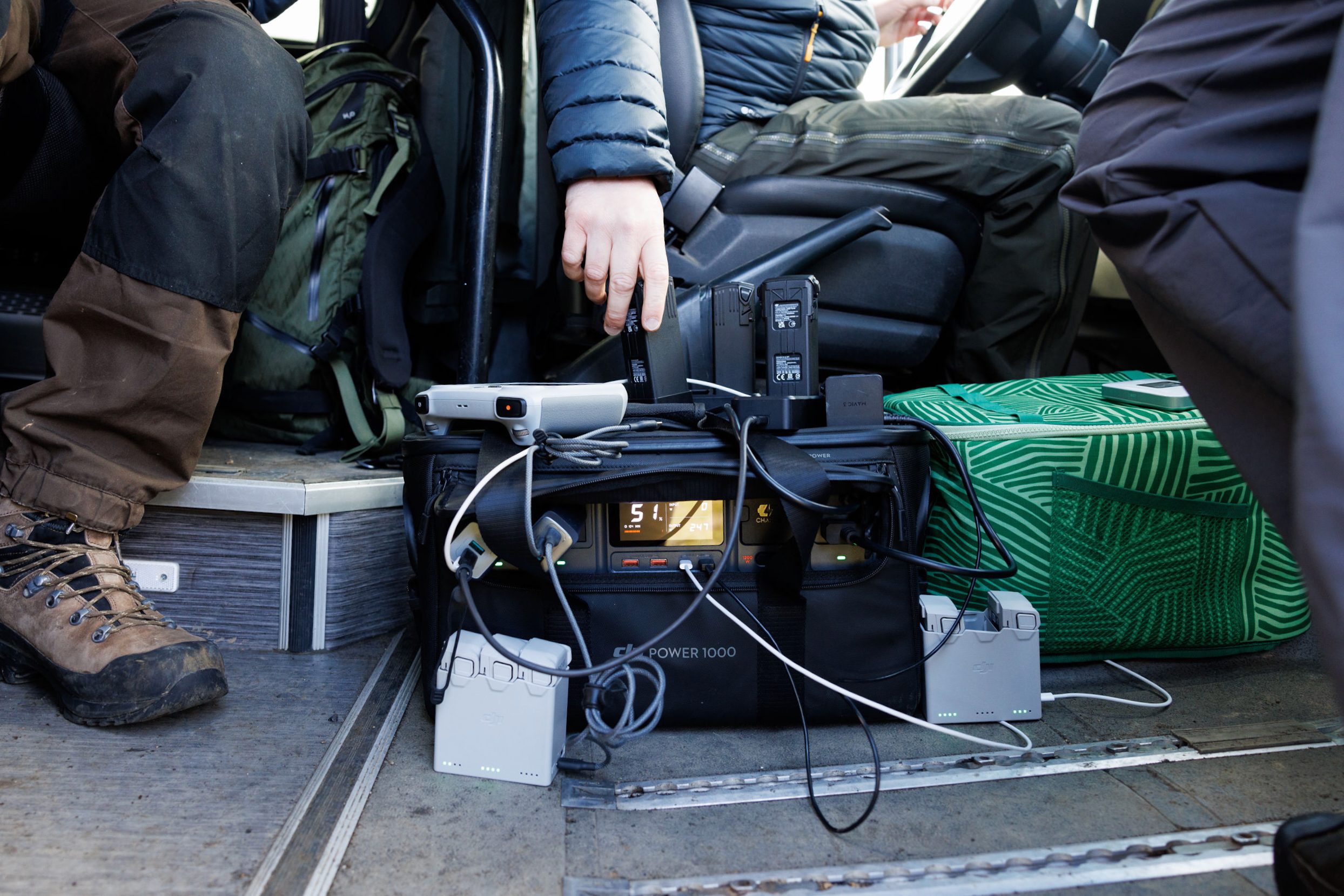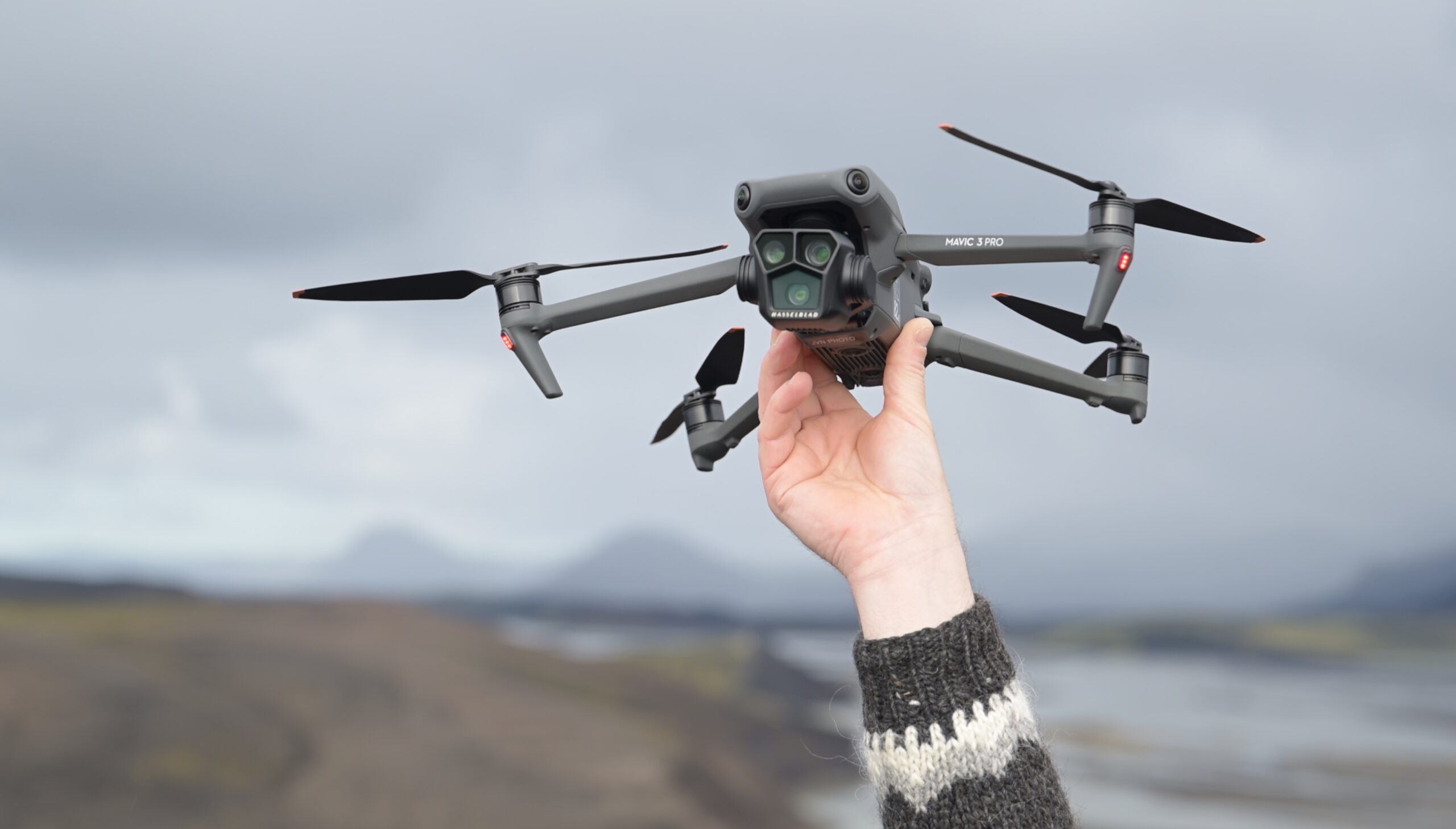When I started out flying drones, one thing became very clear very, early on: you never have enough drone batteries with you. It’s true. When conditions are great, I will sometimes need up to 15 batteries per day to keep up with the amount of flying, photographing and filming I do. You could argue that you can just carry more batteries but drone batteries are unfortunately large & heavy – unlike camera batteries. But last year I finally found the perfect companion to help me with my drone battery issues. Not only that, it’s the perfect tool to use during my photo workshops to make sure everyone can keep shooting and flying.
In this review, I want to talk about the DJI Power ecosystem and more specifically about why I am a happy user of the DJI Power 1000 and DJI Power Expansion Battery 2000. It’s definitely not for everyone but let me dive into what makes it tick for someone like me, a professional photographer who is often on the road. I have been using my DJI Power 1000 for almost one year now so I think I am ready to share my thoughts…
Disclaimer: I have purchased the DJI Power 1000 and DJI Power Expansion Battery 2000 with my own money. No one asked me to write this review, nor was I sponsored or paid to do so. If you decide to use one of the affiliate links in this article, I may get a kickback if you decide to purchase something.
This is just one image showing how much use I get out of the DJI Power 1000 on a photo workshop. We literally use every possible way to charge up drone batteries to get the absolute most amount of drone photography out of the workshop.
Thanks to Jeremy Folk for capturing this photo on one of my photo workshops.
What Is The DJI Power 1000 & What Can You Expect From ?
The DJI Power 1000 is essentially a massive power-bank, with all the charging ports you can think of and a built-in 22oV inverter. This means you can charge or use almost any device with it ranging from charging batteries to even using it to power a coffee machine. The DJI Power 1000 has a 1024Wh capacity and can be expanded with additional units, which I will mention later on in this review. The DJI Power 1000 can also be used as a UPS (Uninterrupted Power Supply) which can be used in your home. However, I found that when you use it in this way, it becomes quite noisy in a quiet place such as an office.
As you may have guessed by seeing its size already, this is not a battery you can travel with on planes but it’s rather something you use when you’re traveling by car, or at home. I have used mine for almost a year now and have been extremely happy with its capabilities.
What Charging Ports Can You Expect?
There are a lot of useful charging ports on the DJI Power 1000 which are…
-
2x AC outputs
-
2x USB-C ports
-
2x USB-A ports
-
1x SDC port
-
1x SDC Lite port
-
Finally, 1x AC Input to charge the unit.
Spread out over all these ports, the unit is able to output up to 2200W simultaneously. If you want to see more details in regard to power output per specific port, you can see the entire spec sheet on DJI’s website.
How Many Devices Can You Charge With It?
The DJI Power 1000 has a 1024wH capacity. However, it is pretty much impossible to tell you how long the unit would last because that depends, of course, on what you are using it for. One reference I can give is that when I am alone and I use the DJI Power 1000 to continuously charge my Mavic 3 Pro drone batteries, I can quite literally use it the entire day. One time I was out photographing and filming and I used it from 10am until 6pm with still 33% left on the unit. Incredibly useful if you ask me!
The DJI Power 1000 has an abundance of ways to charge your gear thanks to the many ports available on the front panel.
The Biggest Advantage To Me: SDC Ports
Two of those ports in the list are likely unknown to you: the SDC and SDC Lite ports. Both ports are proprietary by DJI and support a variety of accessories with each port supporting up to 240W of charging capabilities. While you plug in all kinds of accessories, the most important to me as a photographer are the fast charging cables for various DJI drones. Unlike the regular charging cables that come with your drone, the SDC versions of them are able to charge your drone batteries MUCH quicker. For example: with the DJI Mavic 3 Pro, I can fully charge a battery (from 0% to 100%) in 30 minutes. That means that on days where it is not windy, I will charge a battery as fast as I deplete one while flying. This has allowed me to be up in the air for an entire day (from 10am to 6pm), without break, because I could just keep recharging the batteries without having to stop flying. Super useful for a heavy drone user like myself!
There are also a few other accessories such the wireless module that allows you to monitor the DJI Power 1000 and update it. Via that same dongle you can limit the battery’s capacity to extend its life (for example, cap it at 80%). Finally, you can also connect solar cells and car chargers (via the cigarette lighter plug).
DJI Power 1000’s Well-Designed Carrying Bag
Another massive advantage is the incredibly well designed carrying bag. While optional, it is a must in my opinion. After unzipping the top of the bag, the DJI Power 1000 slides very snuggly into the bag. You then close the top and voilà, the unit NEVER has to leave the bag anymore. By opening the front zipper, you can access the ports, while the side zippers allow you to keep the unit ventilated. In the back, there is another zipper where I store my charging accessories such as USB-C cables, charging bricks, SDC cables and more. I know, I am a sucker for these kind of well-designed accessories but it truly improves your quality of life, especially when you are on the road all the time like me. Carrying the unit around and keeping all your cables together is super easy thanks to this bag.
The DJI Power 1000 sits very snuggly inside the optional protective bag which makes it super easy to protect the unit but also to carry it around. I do wish it was included in the box as it is a must to get one.
The Capacity Elephant In The Room: DJI Power Expansion Battery 2000
I have already mentioned it but there is more, a lot more if you look at the capacity: the DJI Power Expansion Battery 2000. This is my most reason addition, which means I have not been using it for one year yet. However, it has quickly become invaluable to me. This unit looks very similar to the DJI Power 1000 except that it has no large display or additional ports other than the 2 SDC ports. By using the SDC ports on the DJI Power 1000, you can expand your unit by another 2048kW essentially tripling the capacity of the DJI Power 1000. Not only that, you can daisy-chain 5 of these DJI Power Expansion Battery 2000 units together to get an obscene amount of battery capacity while you are on the go. Having 5 units, with the DJI Power 1000, gives you a total capacity of 11264Wh. And this is where this unit shines: its modularity. Need more power? Bring more units. Need less? Leave them at home. There is no need to always carry an extremely heavy, high capacity unit with you all the time when you don’t need its full capacity. Sounds incredible right?
Just like the DJI Power 1000, this unit also fits in the super handy carrying bag as it is pretty much the same size as the DJI Power 1000. The one downside is that this unit is heavy at 16,5 kilos. Not that I would think anyone is hiking around with one of these though.
A full list of specifications for the DJI Power Expansion Battery 2000 can be found on DJI’s website.
The DJI Power 1000 and DJI Power Expansion Battery 2000 are pretty much the same size, with the expansion battery being slightly heavier.
The DJI Power 1000 and DJI Power Expansion Battery 2000 both fit in the same protective bag, which makes both of them easy to carry around.
The DJI Power Expansion Battery 2000 has no additional ports and can be connected to the DJI Power 1000 using an SDC to SDC cable which comes with it.
Who Is The DJI Power Ecosystem (Not) For?
Let’s start with who the DJI Power 1000, and its ecosystem, is for. It’s very clear this is a product aimed at (semi-)professional photographers who have a lot of power requirements when they are out in the field. In my case, I have a big power requirement for drone photography but also to make sure my photo workshop participants are able to keep their drone batteries charged all day. Even if you are not a drone pilot, you may want extra power on-the-go for portrait lighting, charging video gear, and more. The possibilities are many!
So who is not for? I think first and foremost, if you have to ask “Is this for me? Can I use this?” you are likely not the target audience. If you are not a drone pilot, and don’t have exuberant power requirements out in the field, the DJI Power 1000 will not contribute to your workflow. Also, if you do have big power requirements but you travel a lot internationally or by plane, the DJI Power 1000 will likely just sit there and gather dust as it is not a “power bank” you are allowed to take on planes.
If you have major power requirements on-the-go the DJI Power 1000 is definitely for you.
Why I Am A Happy User Of The DJI Power 1000
You will undoubtedly already have noticed that I am a very happy user of the DJI Power 1000 and its expansion battery. In this review, I have already explained some of the upsides that have made my life easier but here is a rundown of everything I love about it:
- The variety of ports and the multitude of devices you can charge simultaneously are a game changer. Even if you run out of the classic USB-C and USB-A ports, you can plug in charging bricks to the AC power plugs. At the same time, you can also keep the unit juiced up via the cigarette plugs in your car. While that does not charge as fast as when you plug it in, it does give you even more capacity.
- The unit, when plugged into your home’s AC plugs, charges super fast. To fully charge the DJI Power 1000, it takes about one hour. At the same time, you can also use it to charge your gear. After a day of shooting, I am usually ready-to-go within two hours of plugging everything in.
- A massive advantage for me are the SDC ports and the dedicated drone charging cables. These allow me to fast-charge my drone batteries, even faster than the charger that comes with my drone. This has been such a game-changer for me, which has allowed me to produce much more content than usual.
- The handy storage bag for the DJI Power 1000 is possibly my favorite accessory. It is well thought out and I haven’t even taken my unit of the bag since I began using it a year ago.
- If you have more power requirements, you can expand the unit by getting the DJI Power Expansion Battery 2000. I really like the modularity of it. If you don’t need the extra power, you can just leave the unit at home. If you need even more, you can daisy-chain up to 5 of them together.
- Finally, the handy display will give you all the useful information at a glance. Need more? Connect to the DJI Power 1000 wirelessly via the new module to get all the stats on your phone. You can even limit the battery capacity to extend its life.
Undeniably, there are a few things I hope they improve with the next iteration of the DJI Power 1000 to make this into an even better products.
- The wireless module that allows you to connect to the unit via Bluetooth is really something should be built-in to the DJI Power 1000. It’s very clear that the development of this product was an aftermarket thought and it taking up one out of two SDC ports is really limiting. Of course, you do not have to keep it plugged in and in essence, I only really use it to update my unit.
- I have tried using the unit in UPS mode (Uninterrupted Power Supply), which means it basically passes through power from an outlet until you have a power cut. While this functionality works great, the noise coming from the fans is too much for it to be used in a small office like I have. It should be noted that the unit is mostly quiet when you are not using it in UPS mode and when the inverter is off (for the two 220V plugs) you can’t hear anything at all.
All in all, if you have large power requirements on-the-go, the DJI Power 1000 (and its ecosystem) is an absolute no-brainer to me!
The display on the DJI Power 1000 gives you an overview of power consumption, estimated time remaining, as well as how much wattage the unit is charging by.
The DJI Power 1000 and its ecosystem has quickly become invaluable to me as a photographer who runs a lot of photo workshop and is outdoors a lot.
Support Jeroen’s Work
As an independent photographer, Jeroen partially relies on your support to keep producing worthwhile content such as blogs, photographs, books and much more. If you want to support his work, it is possible to do so by buying his e-books & books, prints or calendars.
You can also sign up to the newsletter to stay up to date on new blog posts, projects, workshops and other interesting information.
Thank you for considering!
























